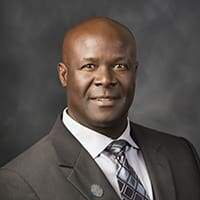Brain Changes That Accompany Dementia

You may be somewhat familiar with the memory changes that may occur as a result of the underlying diseases that may cause Dementia. Have you ever wondered what pathological changes in the brain lead to changes in behavior, movement, communication, or other issues?
Each type of Dementia may, especially initially, affect the brain slightly differently, but the good news is, recognizing the changes can provide you the chance to take early steps toward getting a thorough medical workup. It’s a matter of changing your perspective.
Noticeable changes = better chances of diagnosing what’s going on. Why is that important? Because many cognitive changes (those that may never or have not yet progressed to Dementia) may be meaningfully addressed if caught early enough.
In brief, here are four of the most common causes of Dementia, and their most common changes:
Alzheimer’s disease (AD)
First described by Dr. Alois Alzheimer in the early 1900s, Alzheimer’s disease causes a number of brain changes, which impact recall, language skills, and more, says Daniel L. Murman, MD, director of the behavioral neurology division in the department of neurological sciences at the University of Nebraska Medical Center in Omaha.
Changes typically begin in the hippocampus, two important but small seahorse-shaped sections deep inside the temporal lobes where short-term memories are transformed into long-term memories. Next, the greater temporal lobe areas (two sections located to the sides and behind the ears) are affected – they help people understand language – followed by portions of the frontal lobes (behind the forehead), which help with emotions, language, decision-making, and multitasking.
Vascular Dementia (VaD)
Small ischemic strokes (mini-strokes) – which limit blood supply to minute sections of the brain – may ultimately cause damage to any number of brain regions over time, gradually, and often in a stepped fashion, inflicting sufficient pathological changes to the brain tissue resulting in major cognitive deficits in many people. Among the many changes are personality, delusions, paranoia, trouble walking, and falling more often.
There is not necessarily a rhyme or reason to the brain regions which may be affected by Vascular Dementia; any area that’s damaged by Stroke may experience problems. The symptoms which arise are particular to the area of the brain that’s been damaged. Because of this, there isn’t as predictable a disease progression for Vascular Dementia.
Lewy Body Dementia (LBD)
Discovered by Dr. Friedrich Heinrich Lewy, in the early part of the 20th century, there are two primary subtypes of Lewy Body Dementia: Parkinson’s disease with Dementia, which causes movement symptoms first, and Dementia with diffuse (everywhere) Lewy bodies, which may affect the thinking, emotional, and visual portions of the brain first.
If memory is impacted before movement, the brain’s limbic cortex is usually affected initially; this region helps to regulate behavior and emotions. Gradually, it affects the hippocampus – which is instrumental in forming new memories – and the portion of the midbrain which is responsible for movement, known as the substantia nigra.
Frontotemporal Dementia/Degeneration (FTD)
This form of Dementia is named after the brain regions it typically impacts, the frontal and temporal lobes. As mentioned above, as with other Dementias, these sections affect language and memory but are also substantially responsible for emotional regulation.
People may experience early personality changes and loss of language, which impedes their ability to communicate. “People often become more impulsive, disinhibited, less sympathetic and have decreased insight… with relative preservation of memory,” Murman says. Lastly, movement can become impaired, and it’s not uncommon for younger, middle-aged adults, in their 50s to be affected. In addition, unlike many other causes of Dementia, genetics may play a larger role in certain subtypes of the disorder.
Lisa Fields is a full-time freelance writer who specializes in health, psychology, Sleep, nutrition, and fitness. Her work has been published by Reader’s Digest, WebMD, Women’s Health, Good Housekeeping, Self, and many other publications. Learn more about Lisa at https://www.writtenbylisafields.com.
The opinions expressed by contributing authors are not necessarily the opinions of the Dementia Society, Inc. We do not endorse nor guarantee products, comments, suggestions, links, or other forms of the content contained within blog posts that have been provided to us with permission, paid or otherwise. Dementia Society does not provide medical advice. Please consult your doctor. www.DementiaSociety.org























